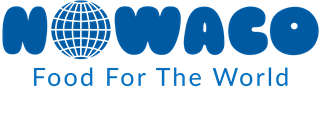Nowaco Web article April 19th
The impact of African swine fever on the European pork market
African Swine Fever (ASF) is a viral disease with mortality rates up to 100%. As the virus survives in the environment on everything from clothes and boots to tires, it is highly contagious and spreads easily among and between wild boars and domestic pigs. It also remains active in pork products, including hams, sausages, and bacon, and can thus proliferate far and wide when these are shipped from one place to another. So far, scientists have been unable to develop an effective vaccine to check its devastating effects on pig populations.
ASF is endemic in sub-Saharan Africa. It was discovered in 1921 when pigs recently imported from Europe to Kenya succumbed to the disease. The virus first entered Europe in 1957, when an outbreak in Portugal soon spread to Spain and from there to other countries. It took nearly 40 years of massive efforts to eradicate the disease from the Iberian Peninsula, which was finally declared ASF-free in 1995.
ASF marches across the Caucasus into Russia, the EU, and China
2007 marked a turning point in ASF’s European presence and its eventual worldwide spread.
While it had for years been and still is endemic in Sardinia, it was in 2007 that ASF first spread to Georgia and Armenia in the Caucasus, and then quickly moved on to Azerbaijan, the European part of Russia, Ukraine, and Belarus. Since then, the disease’s global foothold has rapidly accelerated.
- By 2014 ASF had spread to the Baltic states of Lithuania, Latvia, and Estonia.
- China noted its first case in August 2018, soon leading to the loss of hundreds of millions and massive disruption of the global pork market. From China, ASF quickly spread to over 15 other Asian nations.
- By 2019 the list counted nine EU countries: Belgium, Bulgaria, Estonia, Hungary, Latvia, Lithuania, Poland, Romania, and Slovakia. Despite efforts to stem the spread via wild boars from Poland, Germany noted its first case in boars in September 2020, and in domestic pigs in July 2021. Italy has also had wild boar cases. Both Belgium and the Czech Republic were since able to eliminate the disease.
- As we write, ASF has been reported in at least 35 countries worldwide.
ASF has had profound effects on the global and European pork markets – and more are sure to come
ASF has disrupted the global and European market in at least three significant ways:
1. Small farmers with poor biosecurity have proven especially vulnerable and are leaving the market rather than adapting to the new reality: In country after country, ASF has been particularly devastating for small farmers. Not that the virus doesn’t affect large farms, too. It certainly has and will. But large farms with thousands of heads, a lot of working capital at stake, more professional management, and better borrowing resources quickly proved better at risk mitigation. Larger farms have implemented strict biosecurity measures that sharply limit human visits to farms, impose exacting hygiene routines and testing, and perimeter fences to keep wild boar at a distance.
In China, where ASF decimated pork production by half, production concentration has been extreme and fast. Small producers that produced more than two-thirds of China’s pork in in the early 2000s now produce less than 5%. Gigantic factory farms are taking their place. Muyuan Food opened a massive facility near Nanyang within two years of the outbreak. It is expected to produce as many as 84,000 sows and piglets when fully operational. While less pronounced than in China, such consolidation occurs throughout the world.
2. China’s outbreak ban on imports from EU countries with outbreaks disrupted established trade patterns: As farmers and buyers across Europe discovered when a single wild boar carcass infected with ASF was found in in a Spree-Neisse forest near the Polish border, China’s ban on all German pork products quickly turned the European pork market upside down.
After Chinese pork prices shot up precipitously, Spanish slaughterhouses, for example, quickly moved to sell what they could to pork-hungry and cash-flush Chinese buyers. The consequences for domestic Spanish buyers, especially for small and medium-sized pork product producers, agents, and wholesalers, were stark. Trading relationships that had existed for years quickly made no difference. When China was willing to buy as many containers of whole hogs as they could pack and ship, Spanish slaughterhouses prioritized these simple, profitable transactions over much smaller deals for this or that pig part. This left many producers scrambling for supply even at considerably higher prices than they were accustomed to.
3. Increased price volatility: People in markets around the world are still hungry for pork products. But ASF has introduced yet another dimension of uncertainty to a market that was already extremely volatile.
As if currency exchange rate fluctuations, changing trade and veterinary regulations, and climate-change’s impact on feed production were not enough, now, the shutdowns and openings of exports from entire markets adds even greater volatility. Production and liquidity planning, already hard enough, just got harder, for everyone not equipped with a highly accurate crystal ball. I.e., everyone.
Coping strategies are not foolproof, but they do help
With billions of euros worth of pork trade and the survival of many farms and companies dependent on the whims of a few wild boars, the situation is indeed daunting, especially for small and medium-sized producers and purchasers.
Nowaco recommends thorough examination of current procurement practices to understand the threats and vulnerabilities that define risk.
The more purchasing managers understand what drives market fluctuations, the greater their range of purchasing options, and the greater their flexibility in dealing with sudden changes, the more resilient they will be in the face of sudden changes.
